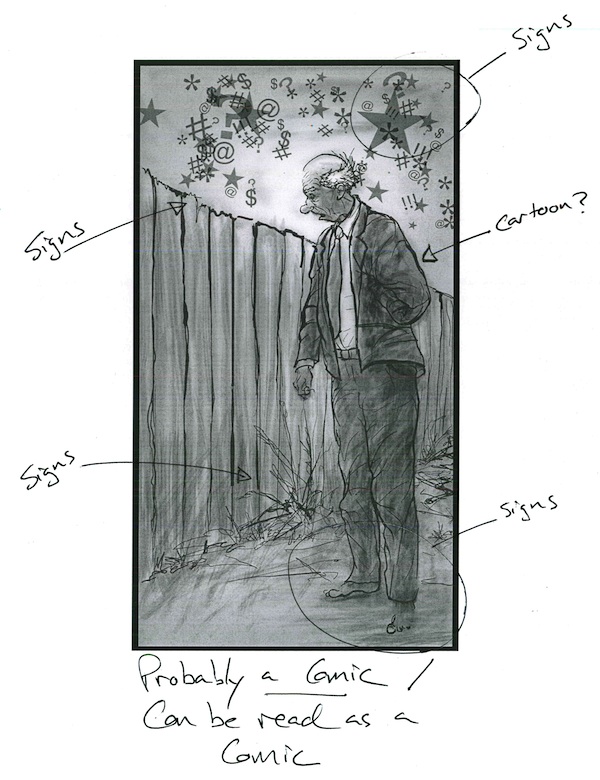Defining Comics

Is "Sonic Medicine" a Comic?
In Understanding Comics, Scott McCloud (1993/1994) defined comics as “juxtaposed pictorial and other images in deliberate sequence” (p. 9), and his definition has become an important point of reference in comics theory. McCloud’s definition highlights the way that comics feature the joining of multiple visual pieces assembled together for the purpose of sending messages to an audience. By this definition, comics artists are improvisatory signmakers, drawing deliberately on semiotic resources that will be understood by a given audience and combining those chosen resources in evocative ways for that audience.
One might question, for example, what amounts to a sequence for McCloud, or whether text-image combination should be more clearly a part of his definition, as McCloud himself has admitted (pp. 20-21). His definition is helpful but, inevitably, incomplete; there is no perfectly attenuated definition for comics as a form, any more than there is a perfect definition for any artistic form. On this point, comics scholar Joseph Witek (2009) has argued helpfully that definitive “comicsness” is not to be found in “the more-or-less arbitrary stipulation of some defining formal criteria (such as the presence of word balloons, the placement of verbal text within the picture plane, the creation of continuing characters, or the use of mechanical printing)” (p. 149). Instead, Witek wrote, comicsness is “a historically contingent and evolving set of reading protocols that are applied to texts” (p. 149). Those reading protocols depend, in part, on the attitudes of readers: “to be a comic text is to be read as a comic” (p. 149).[1] And the protocols shift over time, as Witek demonstrated in his analysis of how arrows, numbers, and grid lines in comics have developed. It may be impossible, then, to put forward an authoritative definition of “comics” or “comicsness,” but two generally observed traits have been fundamental to modern comics and are more or less expected by all comics readers: that comics come to life through the concatenation of multiple visual signs (as McCloud has explained) and that comics tend to be built around cartoons. Though these two basic traits do not point us to every facet of comics as an artform, they can make a fine starting point for would-be visual composers looking to learn from comics.
[1] Witek’s (2009) formula might be reversed to focus on the intentions of creators: To be a comic is to be produced as a comic. And it could happen that a text intended as a comic is not received as a comic, or that a text not intended as a comic is received as a comic. But Witek’s statement is helpful as a starting point in that it identifies comics-ness rhetorically, in a sender–text–receiver relationship.


